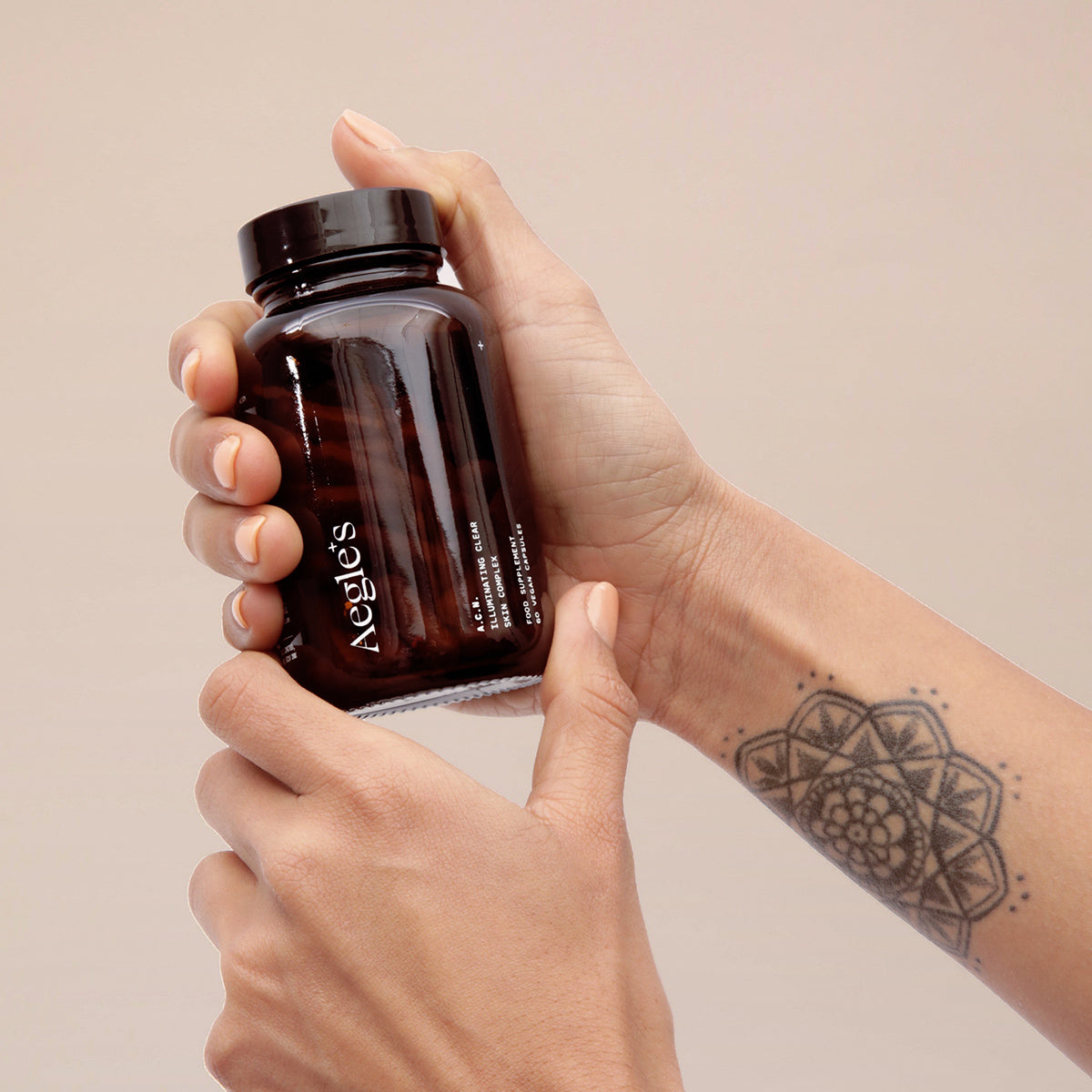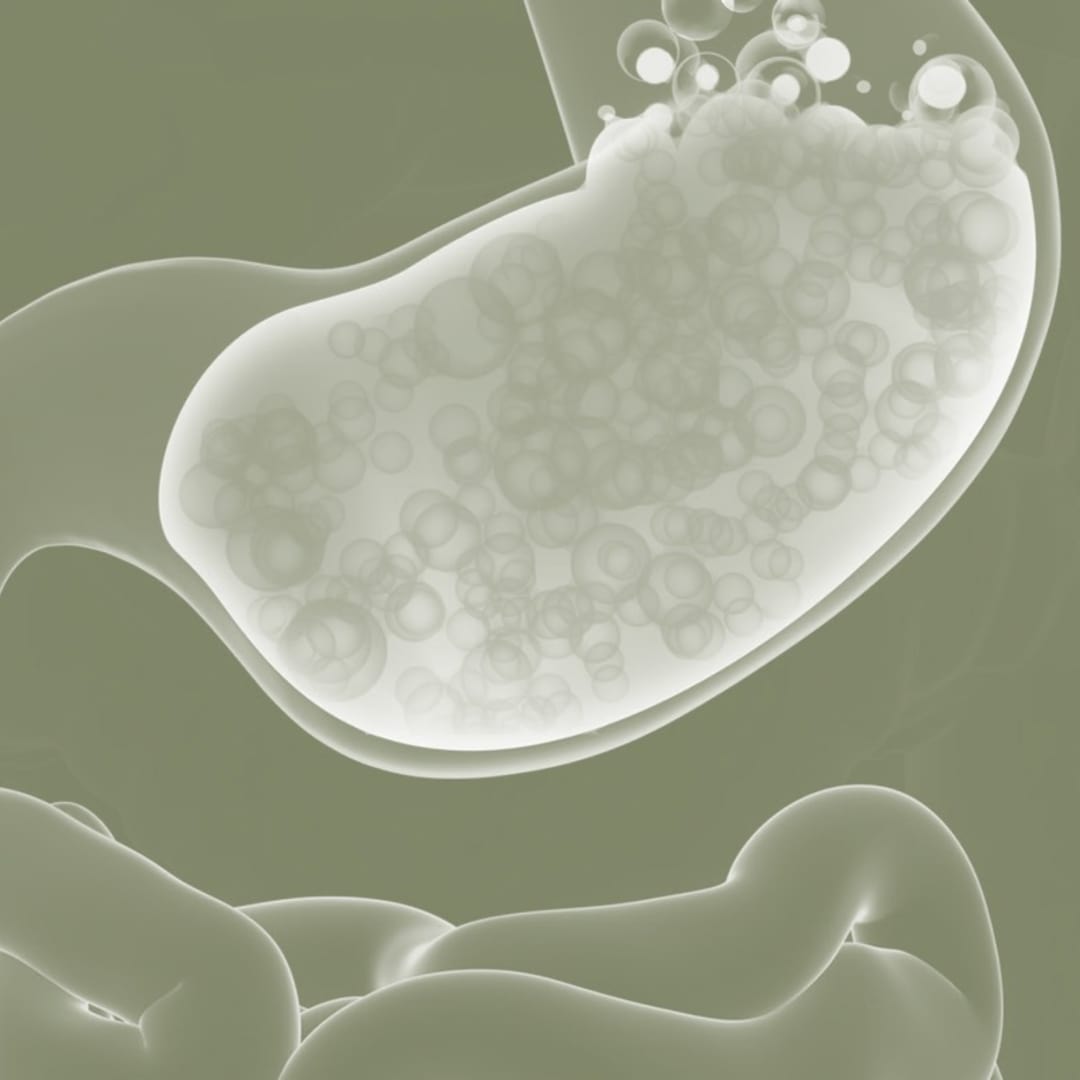The gut-skin axis refers to the connection between our digestive system and our skin. This article explores how the health of our digestive system can be the cause of hormonal blemishes, with consideration to the gut-skin axis.
Even though the digestive health can be a strong contributing factor or even the sole cause of breakouts in adult women, the woman still needs to be within the age bracket where elevated sebum production can take place. As without the possibility for elevated sebum production, oily skin and blemishes won’t occur. This age bracket is from puberty to menopause so varies slightly for each woman.
Human microbiome
The human microbiome refers to all of the microbiota that reside on and within human tissue and body fluids. This article is an inquiry into the microbiota that resides on the skin and in the gastrointestinal tract only.
Microbiota can be a whole range of microorganisms, including bacteria, fungi, viruses and yeast among others. Some microorganisms coexist in the human body without causing any harm, others create benefits to the health of the human body, whilst others can cause imbalance and therefore harm.
In a healthy human, there are more than 10,000 microbial species and 100 trillion microbiota that live within and on the human body that coexist without causing harm.
Gut dysbiosis
The gut microbiota make up the greatest number of microbial species than any other part of the human body.
When there is an imbalance in this microbiota, it is referred to as gut dysbiosis, with “dysbiosis” meaning a disruption to the microbiota homeostasis.
This dysbiosis can contribute to a range of health issues and symptoms, including acne.
Gut dysbiosis and hormones
Even though an overproduction of sebum is needed for an acne breakout to occur, a hormonal imbalance is usually the cause behind the overproduction of sebum. But what is the root cause of the hormonal imbalance?
A hormonal imbalance can be caused by many factors including diet, chronic stress, disease and medications, as well as gut dysbiosis.
Healthy microbiota in the gut aids in the synthesis and regulation of healthy hormones. So when there is an imbalance in the gut microbiota, there can also be imbalances in hormones.
Estrobolome and estrogen dominance
Estrobolome is a collection of healthy bacterias in the gut which metabolises the body’s circulating estrogen. When there are healthy levels of estrobolome, it works to minimise the reabsorption of estrogen from the gut, allowing it to be safely removed by one of the body’s healthy elimination channels.
However, when there is too much estrobolome, the result can be a reabsorption of estrogen into the body. This leads to an excess of free circulating estrogen and therefore estrogen dominance. Which is one of the leading causes of chronic acne in adult women.
An imbalance in estrobolome can be caused by the following:
- Antibiotics
- Diet
- Obesity
- Regular alcohol consumption
- Genetics
- Environmental pollutants
- Age
Blood sugar
The relationship between blood glucose and the gut microbiota is bidirectional. This means that an imbalance in gut microbiota can cause an imbalance in blood glucose levels, and elevated blood glucose levels can in turn influence the microbiota.
One of the leading causes of hormonal blemishes and oily skin in women is blood sugar sensitivity and insulin resistance. Therefore, when the gut microbiota is in an imbalance there is a higher chance that the woman will experience breakouts through a possible imbalance in blood glucose levels. And in addition, this imbalance in the microbiota can further contribute to the blood sugar imbalance and therefore a worsening of the skin.
For healthy gut microbiota and clear skin, it is helpful to maintain a healthy blood sugar balance through diet and supplementation such as chromium, and vitamins A and D3.
Candida
Candida is a yeast and a member of the microbiota that is found in the mouth and gastrointestinal tract in up to 60% of healthy adults. In the majority of cases the candida does not have any symptoms or adverse effects and therefore does not cause any harm.
There are more than twenty types of candida that can live in the human body, with Candida albicans being the most common.
Alternation of the gut microbiome from the use of antibiotics, autoimmune disease (such as type 1 diabetes) or intestinal barrier damage, can lead to candida dysbiosis, which is an overgrowth of the candida. This can cause a systemic candida infection.
The type of blemishes that are caused by candida dysbiosis are fungal in nature. They appear typically on the forehead, upper cheeks, upper arms, chest and upper back. These types of spots appear as small inflammations that are often itchy.
With candida dysbiosis breakouts being fungal in nature, they are made worse by the use of antibiotics. The best treatment is therefore through the rebalancing of the skin and gut microbiome. This is best done through diet, reducing emotional stress and using both oral and topical probiotics.
How to rebalance gut microbiome
It can take up to six months to restore the gut’s microbiome back to healthy levels when there is an imbalance.
It’s important to note here that even though the use of antibiotics is one of the causes of imbalances in gut microbiome, sometimes the use of antibiotics is essential. However, it’s equally as essential to work on restoring the gut’s healthy microbiome after completing the course of the antibiotics.
There are many things that can be done to help to restore healthy gut microbiome, including the following:
- Take a probiotic supplement
- Consume fermented foods, such as sauerkraut, kombucha and kefir
- Aim to eat 30 different varieties of plants a week, such as fruits, vegetables and whole grains
- Reduce alcohol consumption
- Maintain a healthy body weight
- Exercise regularly
- Reduce stress
- Get enough sleep
Start your journey to heal your skin now.

Start your journey to heal your skin now.
- Contains ingredients clinically proven to improve blemishes and skin radiance.
- Formulated by one of the world's leading skin practitioners.
- The only supplement that works for the three main causes of blemishes, blackheads and oily skin.
Discover more articles
- Choosing a selection results in a full page refresh.






